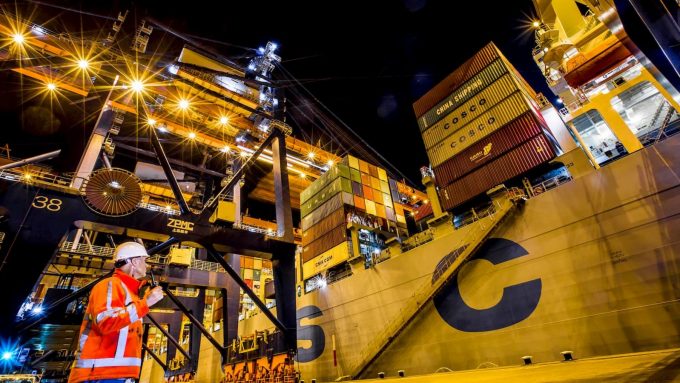Air cargo peak? What peak? But we're 'very, very busy', says market
Airfreight is not experiencing a ‘peak’ season – but is certainly enjoying a busy and ...
BA: WIND OF CHANGEMAERSK: BULLISH CALLXPO: HEDGE FUNDS ENGINEF: CHOPPING BOARDWTC: NEW RECORDZIM: BALANCE SHEET IN CHECKZIM: SURGING TGT: INVENTORY WATCHTGT: BIG EARNINGS MISSWMT: GENERAL MERCHANDISEWMT: AUTOMATIONWMT: MARGINS AND INVENTORYWMT: ECOMM LOSSESWMT: ECOMM BOOMWMT: RESILIENCEWMT: INVENTORY WATCH
BA: WIND OF CHANGEMAERSK: BULLISH CALLXPO: HEDGE FUNDS ENGINEF: CHOPPING BOARDWTC: NEW RECORDZIM: BALANCE SHEET IN CHECKZIM: SURGING TGT: INVENTORY WATCHTGT: BIG EARNINGS MISSWMT: GENERAL MERCHANDISEWMT: AUTOMATIONWMT: MARGINS AND INVENTORYWMT: ECOMM LOSSESWMT: ECOMM BOOMWMT: RESILIENCEWMT: INVENTORY WATCH

Supply chain bottlenecks – largely due to the Red Sea attacks and Panama Canal restrictions –and expectations of high seasonal demand have seen ocean freight rates rise – but industry stakeholders believe they could fall after the pre-Chinese New Year rush.
In a recent Drewry briefing, MD Philip Damas predicted that spot rates will decline after the holiday, and added that “shipping has more than enough capacity to deal with the many diversions around South Africa”.
Vespucci Maritime CEO Lars Jensen told The Loadstar the spike in rates had been driven by short-term fears of capacity shortages due to the rotation disruptions from rerouting vessels away from the Suez Canal.
Mr Damas said there was currently very little spare Asia-Europe capacity available in the run up to CNY, which he said was causing “something of a panic”.
And he warned that the next few weeks leading to CNY, which begins 10 February, would be “very difficult for shippers and shipping”.
However, Mr Jensen said: “I think rates will abate somewhat after CNY – in the seasonal demand lull these short-term issues should be worked out, causing rates to abate.”
Commercial director at AFS Global Chris Higgins told The Loadstar: “Post CNY, the mega-vessels will get back to Asia to restart their loops and bring capacity back into the market, which may encourage a rate reduction.
“Our expectations are that we are at the peak of the rate hike now, in the last three weeks before CNY.”
However, Mr Higgins warned that the Red Sea unrest had placed a question mark over the possibility of rate reductions. He said: “The longer the vessels route around the Cape, the longer the carriers have increased costs and, therefore, the longer this rate peak, or at least higher than true market rate level, remains.”
Mr Jensen agreed: “If we continue to sail around Africa, rates will still level out much higher than seen pre-crisis and stay elevated until the Suez routing is again viable.”
CEO of Exfreight, Charles Marrale, told The Loadstar: “All factors create strong motivations for ocean carriers to increase rates by establishing GRIs, PSSs and other contingency or emergency surcharges. Transpacific freight rates could spike to highs not seen since early 2022, with the Suez Canal route suspended and the Panama Canal route restricted.”
However, eeSea founder Simon Sundboell predicted that carriers could look to other methods, such as slow steaming and blank sailings, to further cut costs.
“We are seeing an increase in freight rates, but is this sustainable?” he asked.
Comment on this article